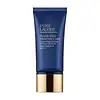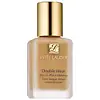Estée Lauder Double Wear Maximum Cover Camouflage Make Up Face And Body SPF 15 Versus Estée Lauder Double Wear Stay-in-Place Foundation
What's inside
What's inside
 Key Ingredients
Key Ingredients

 Benefits
Benefits

 Concerns
Concerns

 Ingredients Side-by-side
Ingredients Side-by-side

Isododecane
EmollientIsohexadecane
EmollientMethyl Methacrylate Crosspolymer
Petrolatum
EmollientGlyceryl Stearate
EmollientDisteardimonium Hectorite
StabilisingHydrogenated Styrene/Isoprene Copolymer
Titanium Dioxide
Cosmetic ColorantMicrocrystalline Wax
Emulsion StabilisingKaolin
AbrasiveCholesterol
EmollientAloe Barbadensis Leaf Extract
EmollientFusanus Spicatus Wood Oil
MaskingTocopheryl Acetate
AntioxidantLinoleic Acid
CleansingGlycine Soja Oil
EmollientStearyl Glycyrrhetinate
Skin ConditioningBisabolol
MaskingSilica
AbrasivePropylene Carbonate
SolventMethyldihydrojasmonate
MaskingPolyethylene
AbrasiveDimethyl-7-Octene-1,6-Diol
PerfumingPolyglyceryl-3 Diisostearate
EmulsifyingPentaerythrityl Tetra-Di-T-Butyl Hydroxyhydrocinnamate
AntioxidantPhenethyl Alcohol
MaskingMica
Cosmetic ColorantCI 77891
Cosmetic ColorantIron Oxides
CI 77288
Cosmetic ColorantCI 77289
Cosmetic ColorantCI 77163
Cosmetic ColorantIsododecane, Isohexadecane, Methyl Methacrylate Crosspolymer, Petrolatum, Glyceryl Stearate, Disteardimonium Hectorite, Hydrogenated Styrene/Isoprene Copolymer, Titanium Dioxide, Microcrystalline Wax, Kaolin, Cholesterol, Aloe Barbadensis Leaf Extract, Fusanus Spicatus Wood Oil, Tocopheryl Acetate, Linoleic Acid, Glycine Soja Oil, Stearyl Glycyrrhetinate, Bisabolol, Silica, Propylene Carbonate, Methyldihydrojasmonate, Polyethylene, Dimethyl-7-Octene-1,6-Diol, Polyglyceryl-3 Diisostearate, Pentaerythrityl Tetra-Di-T-Butyl Hydroxyhydrocinnamate, Phenethyl Alcohol, Mica, CI 77891, Iron Oxides, CI 77288, CI 77289, CI 77163
Water
Skin ConditioningCyclopentasiloxane
EmollientTrimethylsiloxysilicate
EmollientPEG/PPG-18/18 Dimethicone
EmulsifyingButylene Glycol
HumectantTribehenin
EmollientPolyglyceryl-3 Diisostearate
EmulsifyingMagnesium Sulfate
Tocopheryl Acetate
AntioxidantPolymethylsilsesquioxane
Methicone
EmollientLaureth-7
EmulsifyingXanthan Gum
EmulsifyingAlumina
AbrasiveSodium Dehydroacetate
PreservativeDisteardimonium Hectorite
StabilisingCellulose Gum
Emulsion StabilisingPropylene Carbonate
SolventPentaerythrityl Tetra-Di-T-Butyl Hydroxyhydrocinnamate
AntioxidantPhenoxyethanol
PreservativeIron Oxides
Mica
Cosmetic ColorantCI 77891
Cosmetic ColorantWater, Cyclopentasiloxane, Trimethylsiloxysilicate, PEG/PPG-18/18 Dimethicone, Butylene Glycol, Tribehenin, Polyglyceryl-3 Diisostearate, Magnesium Sulfate, Tocopheryl Acetate, Polymethylsilsesquioxane, Methicone, Laureth-7, Xanthan Gum, Alumina, Sodium Dehydroacetate, Disteardimonium Hectorite, Cellulose Gum, Propylene Carbonate, Pentaerythrityl Tetra-Di-T-Butyl Hydroxyhydrocinnamate, Phenoxyethanol, Iron Oxides, Mica, CI 77891
 Reviews
Reviews

Ingredients Explained
These ingredients are found in both products.
Ingredients higher up in an ingredient list are typically present in a larger amount.
Ci 77891 is a white pigment from Titanium dioxide. It is naturally found in minerals such as rutile and ilmenite.
It's main function is to add a white color to cosmetics. It can also be mixed with other colors to create different shades.
Ci 77891 is commonly found in sunscreens due to its ability to block UV rays.
Learn more about CI 77891Disteardimonium Hectorite comes from the clay mineral named hectorite. It is used to add thickness to a product.
It can also help stabilize a product by helping to disperse other ingredients.
Hectorite is a rare, white clay mineral.
Learn more about Disteardimonium HectoriteMica is a naturally occurring mineral used to add shimmer and color in cosmetics. It can also help improve the texture of a product or give it an opaque, white/silver color.
Serecite is the name for very fine but ragged grains of mica.
This ingredient is often coated with metal oxides like titanium dioxide. Trace amounts of heavy metals may be found in mica, but these metals are not harmful in our personal products.
Mica has been used since prehistoric times throughout the world. Ancient Egyptian, Indian, Greek, Roman, Aztec, and Chinese civilizations have used mica.
Learn more about MicaPentaerythrityl Tetra-Di-T-Butyl Hydroxyhydrocinnamate (long name, huh?) is a synthetic antioxidant.
It is used to help stabilize other antioxidants or prevent the color from changing in a product.
As an antioxidant, it helps fight free-radical molecules. Free-radical molecules are capable of damaging our cells and other genetic material. Thus, antioxidants may reduce the signs of aging.
This ingredient is oil-soluble.
Learn more about Pentaerythrityl Tetra-Di-T-Butyl HydroxyhydrocinnamatePolyglyceryl-3 Diisostearate is an emulsifer and emollient. It comes from Isostearic Acid and Polyglycerin-3.
As an emulsifier, it helps stabilize products by preventing oils and water from separating.
This ingredient may not be Malassezia folliculitis, or fungal acne safe.
Learn more about Polyglyceryl-3 DiisostearateThis ingredient is a solvent. It helps dissolve active ingredients and alter the texture of products.
Propylene Carbonate is commonly used in makeup and with clay, such as montmorillonite or bentonite.
Studies show this ingredient to be safe for cosmetics. When it is undiluted, it can cause skin irritation. (It is always diluted in skincare and makeup). This ingredient is water-soluble.
Propylene Carbonate is created from propylene glycol and carbonic acid.
Learn more about Propylene CarbonateTocopheryl Acetate is AKA Vitamin E. It is an antioxidant and protects your skin from free radicals. Free radicals damage the skin by breaking down collagen.
One study found using Tocopheryl Acetate with Vitamin C decreased the number of sunburned cells.
Tocopheryl Acetate is commonly found in both skincare and dietary supplements.
Learn more about Tocopheryl AcetateThis ingredient is a combination of red, black, and yellow iron oxide pigments. This combination of colors is usually found in foundation, because it results in a "skin" color.